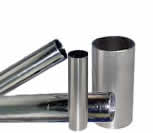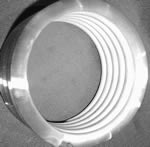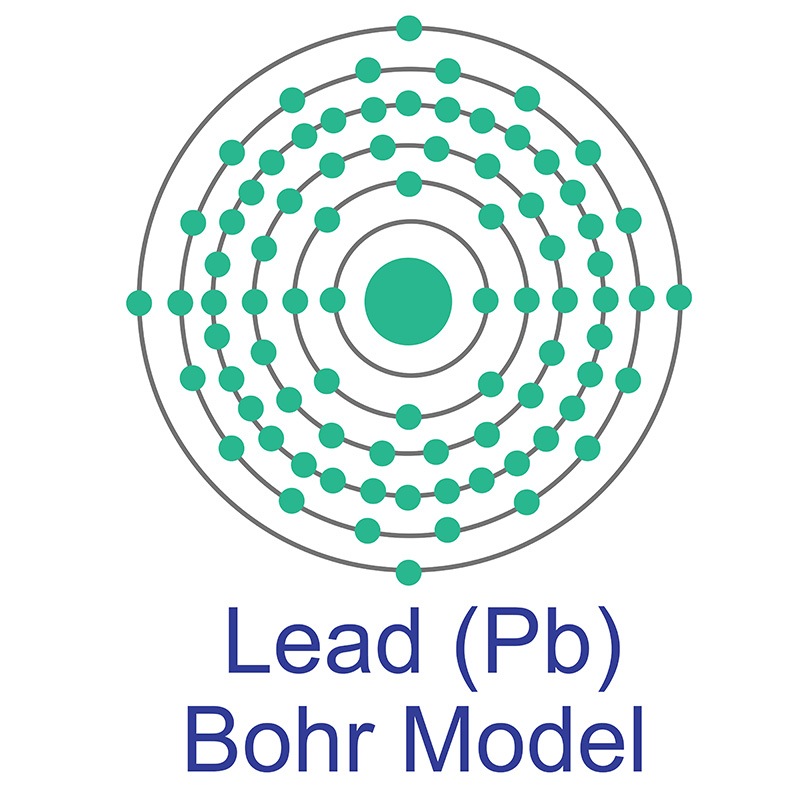SECTION 1. IDENTIFICATION
Product Name: Lead Sleeve
Product Number: All applicable American Elements product codes, e.g. PB-M-02-SLV
, PB-M-03-SLV
, PB-M-04-SLV
, PB-M-05-SLV
, PB-M-06-SLV
CAS #: 7439-92-1
Relevant identified uses of the substance: Scientific research and development
Supplier details:
American Elements
10884 Weyburn Ave.
Los Angeles, CA 90024
Tel: +1 310-208-0551
Fax: +1 310-208-0351
Emergency telephone number:
Domestic, North America: +1 800-424-9300
International: +1 703-527-3887
SECTION 2. HAZARDS IDENTIFICATION
Classification of the substance or mixture
Classification according to Regulation (EC) No 1272/2008
GHS08 Health hazard
Repr. 1A H360 May damage fertility or the unborn child.
STOT RE 2 H373 May cause damage to the reproductive system, the blood, the brain and the endocrine system through prolonged or repeated exposure. Routeof exposure: Oral, Inhalative.
GHS07
Acute Tox. 4 H302 Harmful if swallowed.
Acute Tox. 4 H332 Harmful if inhaled.
Classification according to Directive 67/548/EEC or Directive 1999/45/EC
T; Toxic
R61: May cause harm to the unborn child.
Xn; Harmful
R62-20/22: Possible risk of impaired fertility. Harmful by inhalation and if swallowed.
N; Dangerous for the environment
R50/53: Very toxic to aquatic organisms, may cause long-term adverse effects in the aquatic environment.
R33: Danger of cumulative effects.
Information concerning particular hazards for human and environment:
N/A
Hazards not otherwise classified
No data available
Label elements
Labelling according to Regulation (EC) No 1272/2008
The substance is classified and labeled according to the CLP regulation.
Hazard pictograms


GHS07 GHS08
Signal word: Danger
Hazard statements
H302+H332 Harmful if swallowed or if inhaled.
H360 May damage fertility or the unborn child.
H373 May cause damage to the reproductive system, the blood, the brain and the endocrine system through prolonged or repeated exposure. Route of exposure: Oral, Inhalative.
Precautionary statements
P260 Do not breathe dust/fume/gas/mist/vapors/spray.
P261 Avoid breathing dust/fume/gas/mist/vapors/spray.
P281 Use personal protective equipment as required.
P304+P340 IF INHALED: Remove person to fresh air and keep comfortable for breathing.
P405 Store locked up.
P501 Dispose of contents/container in accordance with local/regional/national/international regulations.
WHMIS classification
D2A - Very toxic material causing other toxic effects
Classification system
HMIS ratings (scale 0-4)
(Hazardous Materials Identification System)
Health (acute effects) = 1
Flammability = 0
Physical Hazard = 0
Other hazards
Results of PBT and vPvB assessment
PBT:
N/A
vPvB:
N/A
SECTION 3. COMPOSITION/INFORMATION ON INGREDIENTS
Substances
CAS No. / Substance Name:
7439-92-1 Lead
Identification number(s):
EC number:
231-100-4
Index number:
082-001-00-6
SECTION 4. FIRST AID MEASURES
Description of first aid measures
General information
No special measures required.
If inhaled:
Seek medical treatment in case of complaints.
In case of skin contact:
Generally the product does not irritate the skin.
In case of eye contact:
Rinse opened eye for several minutes under running water. If symptoms persist, consult a doctor.
If swallowed:
If symptoms persist consult doctor.
Information for doctor
Most important symptoms and effects, both acute and delayed
No data available
Indication of any immediate medical attention and special treatment needed
No data available
SECTION 5. FIREFIGHTING MEASURES
Extinguishing media
Suitable extinguishing agents
Special powder for metal fires. Do not use water.
For safety reasons unsuitable extinguishing agents
Water
Special hazards arising from the substance or mixture
If this product is involved in a fire, the following can be released:
Lead oxide fume
Advice for firefighters
Protective equipment:
No special measures required
SECTION 6. ACCIDENTAL RELEASE MEASURES
Personal precautions, protective equipment and emergency procedures
Not required.
Environmental precautions:
Do not allow material to be released to the environment without official permits.
Do not allow product to enter drains, sewage systems, or other water courses.
Do not allow material to penetrate the ground or soil.
Methods and materials for containment and cleanup:
Dispose of contaminated material as waste according to section 13.
Ensure adequate ventilation.
Prevention of secondary hazards:
No special measures required.
Reference to other sections
See Section 7 for information on safe handling
See Section 8 for information on personal protection equipment.
See Section 13 for disposal information.
SECTION 7. HANDLING AND STORAGE
Handling
Precautions for safe handling
Keep container tightly sealed.
Store in cool, dry place in tightly closed containers.
Ensure good ventilation at the workplace.
Open and handle container with care.
Information about protection against explosions and fires:
No special measures required.
Conditions for safe storage, including any incompatibilities
Requirements to be met by storerooms and receptacles:
No special requirements.
Information about storage in one common storage facility:
No data available
Further information about storage conditions:
Keep container tightly sealed.
Store in cool, dry conditions in well-sealed containers.
Specific end use(s)
No data available
SECTION 8. EXPOSURE CONTROLS/PERSONAL PROTECTION
Additional information about design of technical systems:
No further data; see section 7.
Control parameters
Components with limit values that require monitoring at the workplace:
7439-92-1 Lead (100.0%)
PEL (USA) Long-term value: 0.05* mg/m3
*see 29 CFR 1910.1025
REL (USA) Long-term value: 0.05* mg/m3
*8-hr TWA,excl. lead arsenate;See PocketGuideApp.C
TLV (USA) Long-term value: 0.05* mg/m3
*and inorganic compounds, as Pb; BEI
EL (Canada) Long-term value: 0.05 mg/m3
R; elemental: IARC 2B, inorganic comp.: IARC 2A
EV (Canada) Long-term value: 0.05 mg/m3
as Pb, Skin (organic compounds)
Ingredients with biological limit values:
7439-92-1 Lead (100.0%)
BEI (USA) 30 μg/100 ml
Medium: blood
Time: not critical
Parameter: Lead
10 μg/100 ml
Medium: blood
Time: not critical
Parameter: Lead (women of child bearing potential)
Additional information:
No data
Exposure controls
Personal protective equipment
Follow typical protective and hygienic practices for handling chemicals.
Store protective clothing separately.
Maintain an ergonomically appropriate working environment.
Breathing equipment:
Not required.
Protection of hands:
Not required.
Material of gloves
Nitrile rubber, NBR
Penetration time of glove material (in minutes)
No data available
Eye protection:
Safety glasses
Body protection:
Protective work clothing.
SECTION 9. PHYSICAL AND CHEMICAL PROPERTIES
Information on basic physical and chemical properties
Appearance:
Form: Solid in various forms
Color: Grey
Odor: Odorless
Odor threshold: No data available.
pH: N/A
Melting point/Melting range: 327.5 °C (622 °F)
Boiling point/Boiling range: 1749 °C (3180 °F)
Sublimation temperature / start: No data available
Flammability (solid, gas)
No data available.
Ignition temperature: No data available
Decomposition temperature: No data available
Autoignition: No data available.
Danger of explosion: Product does not present an explosion hazard.
Explosion limits:
Lower: No data available
Upper: No data available
Vapor pressure at 20 °C (68 °F): 0 hPa
Density at 20 °C (68 °F): 11.34 g/cm3 (94.632 lbs/gal)
Bulk density at 20 °C (68 °F): 5280 kg/m3
Relative density
No data available.
Vapor density
N/A
Evaporation rate
N/A
Solubility in Water (H2O): Insoluble
Partition coefficient (n-octanol/water): No data available.
Viscosity:
Dynamic: N/A
Kinematic: N/A
Other information
No data available
SECTION 10. STABILITY AND REACTIVITY
Reactivity
No data available
Chemical stability
Stable under recommended storage conditions.
Thermal decomposition / conditions to be avoided:
Decomposition will not occur if used and stored according to specifications.
Possibility of hazardous reactions
No dangerous reactions known
Conditions to avoid
No data available
Incompatible materials:
No data available
Hazardous decomposition products:
Lead oxide fume
SECTION 11. TOXICOLOGICAL INFORMATION
Information on toxicological effects
Acute toxicity:
Harmful if inhaled.
Harmful if swallowed.
The Registry of Toxic Effects of Chemical Substances (RTECS) contains acute toxicity data for this substance.
LD/LC50 values that are relevant for classification:
No data
Skin irritation or corrosion:
May cause irritation
Eye irritation or corrosion:
May cause irritation
Sensitization:
No sensitizing effects known.
Germ cell mutagenicity:
The Registry of Toxic Effects of Chemical Substances (RTECS) contains mutation data for this substance.
Carcinogenicity:
EPA-B2: Probable human carcinogen, sufficient evidence from animal studies; inadequate evidence or no data from epidemiologic studies.
IARC-2B: Possibly carcinogenic to humans: limited evidence in humans in the absence of
sufficient evidence in experimental animals.
NTP-R: Reasonably anticipated to be a carcinogen: limited evidence from studies in humans
or sufficient evidence from studies in experimental animals.
ACGIH A3: Animal carcinogen: Agent is carcinogenic in experimental animals at a relatively high dose, by route(s) of administration, at site(s), of histologic type(s), or by mechanism(s) not considered relevant to worker exposure. Available epidemologic studies do not confirm an increased risk of cancer in exposed humans.
Available evidence suggests that the agent is not likely to cause cancer in humans except under uncommon or unlikely routes or levels of exposure.
Reproductive toxicity:
May damage fertility or the unborn child.
The Registry of Toxic Effects of Chemical Substances (RTECS) contains reproductive data for this substance.
Specific target organ system toxicity - repeated exposure:
May cause damage to the reproductive system, the blood, the brain and the endocrine system through prolonged or repeated exposure. Route of exposure: Oral, Inhalative.
Specific target organ system toxicity - single exposure:
No effects known.
Aspiration hazard:
No effects known.
Subacute to chronic toxicity:
The Registry of Toxic Effects of Chemical Substances (RTECS) contains multiple dose toxicity data for this substance.
Additional toxicological information:
To the best of our knowledge the acute and chronic toxicity of this substance is not fully known.
SECTION 12. ECOLOGICAL INFORMATION
Toxicity
Aquatic toxicity:
No data available
Persistence and degradability
No data available
Bioaccumulative potential
No data available
Mobility in soil
No data available
Ecotoxical effects:
Remark:
Very toxic for aquatic organisms
Additional ecological information:
Do not allow material to be released to the environment without official permits.
Do not allow product to reach groundwater, water courses, or sewage systems, even in small quantities.
Danger to drinking water if even extremely small quantities leak into the ground.
Also poisonous for fish and plankton in water bodies.
May cause long lasting harmful effects to aquatic life.
Avoid transfer into the environment.
Very toxic for aquatic organisms
Results of PBT and vPvB assessment
PBT:
N/A
vPvB:
N/A
Other adverse effects
No data available
SECTION 13. DISPOSAL CONSIDERATIONS
Waste treatment methods
Recommendation
Consult official regulations to ensure proper disposal.
Uncleaned packagings:
Recommendation:
Disposal must be made according to official regulations.
SECTION 14. EXPOSURE CONTROLS/PERSONAL PROTECTION
UN-Number
DOT, ADN, IMDG, IATA
N/A
UN proper shipping name
DOT, ADN, IMDG, IATA
N/A
Transport hazard class(es)
DOT, ADR, ADN, IMDG, IATA
Class
N/A
Packing group
DOT, IMDG, IATA
N/A
Environmental hazards:
Environmentally hazardous substance, solid
Special precautions for user
N/A
Transport in bulk according to Annex II of MARPOL73/78 and the IBC Code
N/A
Transport/Additional information:
DOT
Marine Pollutant (DOT):
No
SECTION 15. REGULATORY INFORMATION
Safety, health and environmental regulations/legislation specific for the substance or mixture
National regulations
All components of this product are listed in the U.S. Environmental Protection Agency Toxic Substances Control Act Chemical substance Inventory.
All components of this product are listed on the Canadian Domestic Substances List (DSL).
SARA Section 313 (specific toxic chemical listings)
7439-92-1 Lead
California Proposition 65
Prop 65 - Chemicals known to cause cancer
7439-92-1 Lead
Prop 65 - Developmental toxicity
7439-92-1 Lead
Prop 65 - Developmental toxicity, female
7439-92-1 Lead
Prop 65 - Developmental toxicity, male
7439-92-1 Lead
Information about limitation of use:
For use only by technically qualified individuals.
Other regulations, limitations and prohibitive regulations
Substance of Very High Concern (SVHC) according to the REACH Regulations (EC) No. 1907/2006.
Substance is not listed.
The conditions of restrictions according to Article 67 and Annex XVII of the Regulation (EC) No 1907/2006 (REACH) for the manufacturing, placing on the market and use must be observed.
Substance is not listed.
Annex XIV of the REACH Regulations (requiring Authorisation for use)
Substance is not listed.
REACH - Pre-registered substances
Substance is listed.
Chemical safety assessment:
A Chemical Safety Assessment has not been carried out.
SECTION 16. OTHER INFORMATION
Safety Data Sheet according to Regulation (EC) No. 1907/2006 (REACH). The above information is believed to be correct but does not purport to be all inclusive and shall be used only as a guide. The information in this document is based on the present state of our knowledge and is applicable to the product with regard to appropriate safety precautions. It does not represent any guarantee of the properties of the product. American Elements shall not be held liable for any damage resulting from handling or from contact with the above product. See reverse side of invoice or packing slip for additional terms and conditions of sale. COPYRIGHT 1997-2022 AMERICAN ELEMENTS. LICENSED GRANTED TO MAKE UNLIMITED PAPER COPIES FOR INTERNAL USE ONLY.

 American Elements specializes in supplying seamless Lead Sleeves and Sheaths with a variety of dimensions including round, rectangular, square, and oval in numerous standard diameters from 0.02 to 6.0 inches and wall thicknesses from 0.003 to 0.500 inches. Sleeves and sheaths can be further processed to produce rings, washers, sleeves and sheaths. Custom configurations are also available. Sleeves can be threaded to customer specified dimensions. Materials include most metals including the rare earth metals and other advanced materials. Sleeves and sheaths can also be produced from
American Elements specializes in supplying seamless Lead Sleeves and Sheaths with a variety of dimensions including round, rectangular, square, and oval in numerous standard diameters from 0.02 to 6.0 inches and wall thicknesses from 0.003 to 0.500 inches. Sleeves and sheaths can be further processed to produce rings, washers, sleeves and sheaths. Custom configurations are also available. Sleeves can be threaded to customer specified dimensions. Materials include most metals including the rare earth metals and other advanced materials. Sleeves and sheaths can also be produced from  See more Lead products.
See more Lead products. Lead is obtained mainly from galena (PbS) by a roasting process. Anglesite, cerussite, and minim are other common lead containing minerals. Lead does occur as a free element in nature, but it is rare. It is a dense, soft metal that is very resistant to corrosion and poorly conductive compared to other metals. Its density and low melting point make it useful in applications such as electrolysis and industrial materials.
Lead is obtained mainly from galena (PbS) by a roasting process. Anglesite, cerussite, and minim are other common lead containing minerals. Lead does occur as a free element in nature, but it is rare. It is a dense, soft metal that is very resistant to corrosion and poorly conductive compared to other metals. Its density and low melting point make it useful in applications such as electrolysis and industrial materials.
